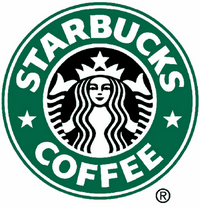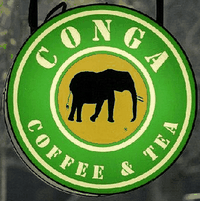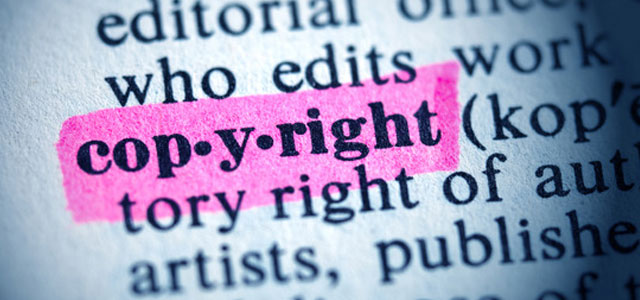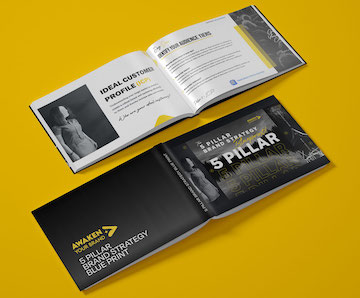Logos are intellectual properties. And as with any property, they can be stolen. Yes, if a physical possession can be stolen, what prevents others from stealing an idea or a design concept?
Yet, it is not only others who can steal ideas; you can become a culprit as well if you don’t know the details of copyright law. If a designer is not well versed in the law, he or she can inadvertently violate copyright laws as well. Thus as a rule of thumb, if it’s not yours, you can’t use it, plain and simple.
Copyright infringement is an issue that does not get the exposure it deserves. There must be enough awareness that this offense is serious. Copyright infringement is a criminal act and the law does not differentiate between stealing jewels and stealing ideas.
Copyright for Logo Designers
The professional design association called AIGA listed its definition of copyright in the context of creative design. Copyright refers to “the exclusive right to control reproduction and commercial exploitation of your creative work.” Copyright provides creative minds with the protection they sorely need. Any type of artwork, photograph or logo design can be subject to a copyright.
For an intellectual property to have copyright protection, it must have “fixed form of expression.” This refers to any tangible medium that can be perceived by people. This covers traditional forms such as sculptures, texts and paintings as well as new forms such as websites, digital picture files and CDs. You can also trademark your logo design.
Copyright Protection for Logo Fonts
In an article, author Mark Monlux discussed the extent of copyright protection for logos especially those which use fonts or letters. Although there are no specific provisions about typeface logo design (according to the USA Copyright Office), the use of fonts have restrictions too. Thus, it pays to study and determine the “artistic features capable of existing separately and independently of the overall utilitarian shape.”
Fonts cannot be sold to a client because they are only “mere lettering.” It is therefore illegal to sell derivatives of a typeface especially if it will be used for a logo.
A tried and tested solution to avoid copyright infringements is to seek the permission of the typeface owner. It does not have to be a face to face meeting. There are also downloadable typefaces with attached user agreements. Designers should verify the extent of these documents.
Logo design is a different case when it comes to font usage. Because logos are used for commercial projects, the owner of the copyright should get compensation for their work.
Font Licensing
Font licensing is not the same as owning a typeface. It only means that the licensee has permission to use a font on only one computer. To be sure, fonts must be bought separately per user. Failure to do so will lead to violations of the end-user license agreement between the logo designer and the typeface owner.
Legal Alternatives to Using Fonts
A logo designer has a legal alternative if he or she wishes to copy a font. The designer should print each letter of the font at a large printer. Scan the resulting image and import in a font design program. This may be morally ambivalent but technically it is legal in the United States.
Another alternative would be to create one’s own typeface. This gives a logo designer more leeway in playing with the design. If the text of the logo is customized, the designer can craft a very specific look according to the needs of the client. This can also lead to additional sources of income because the typeface can be licensed to other designers as well.
Ignorance is bliss, some people say. But ignorance of the law has no excuse. Copyright protection is put in place to look after the welfare of creative minds. It must be carefully studied so that designers will be reminded that they have their rights and responsibilities as well.
« Restaurant Branding: It’s Not Just About the Food | Impulse Buying and Your Business »
Brands & Trademark Infringement
The article in Fashionista by Chantal Fernandez, Feb 2, 2015: “Gucci Loses Trademark Infringement Case Against Guess in France”, got me thinking, once again, about Trademark/copyright Infringements and lawsuits that have become a common occurrence among businesses.
We hardly see a day pass by without a news item of some business giant challenging another business giant in a court of law.
Copyright laws were first made for books to give their original writers protection from other printers or writers plagiarizing the original content without getting consent from the original writer in 1710 in Britain and in 1787 in the USA; however, over the time, commercial products and services have also been included.
They Do It With Mirrors!
Unfortunately, it’s in the human psyche to follow, shadow, steal from and ‘copy’ others. It takes much less time and effort but pays high dividends when a low-budget or startup company ‘imitates’ the products or services of a popular company.
Though the former makes quick bucks with little investment and literally no effort, the latter loses all the brand credibility it has built over the years. In order to overcome this hassle, businesses ‘register’ not only their companies but also their logo designs, names, mottos, slogans and everything else that is connected with their products or services.
Yet they find a way to fleece you!
We all know the saying “Where there’s a will, there’s a way” which can be related to a fake business as much as it’s to a genuine business. The more stringent laws we have, the smarter lawbreakers we see. Thieves broke open the strongest and the safest lockers/vaults over the years.
The top security prisons and the most experienced security agencies have been put to shame by determined inmates who made clever escapes from them.
However, I am not saying that all the intellectual property infringements are on purpose and they are the work of fraudulent businesses. There are as many innocent offenders as there are fake ones. Not all companies involved in lawsuits are guilty of trademark infringement.
There is always a scope for two businesses from two different regions of a country or from two different countries of a continent or even from two different contents having the same idea, same product, same names and same promotional strategy. Fateful coincidences!
It’s like reading about the design of the first airplane being demonstrated in several places at almost the same period of time by unrelated persons. Here is an article that illustrates the issue in more depth: http://www.businessinsider.com/10-items-not-invented-by-who-you-think-2011-8?IR=T#.
Anyway, I am not going to argue who’s genuine and who’s fake in this issue, either, but the point I want to highlight is that there are innocent violators and guilty conmen in this trademark infringement issues. I always advise my clients to be extra careful about choosing their brand names, designing their logos and launching their products.
I sometimes have to be stern with some adamant or impatient client who is in a hurry to launch the product — select a name, get the logo, get a website and here we go — without ever giving a thought to the other aspects which, if not given due consideration, might put him/herself at the risk of breaking a law.
There are cases where a genuine producer had to redo everything or give up the business altogether though his product or service is appreciated by the customers just because he has overlooked a trade law.
So much risk is there in ignoring the trade laws and copyrights that mega companies spend lots of money on engaging experts in dealing with the brand legalities.
Present day Traders have more access to global trade laws
Unlike his counterpart some fifteen or twenty years ago who had no easy access to all the products or services found around him, a present day businessman can have most of the information he needs in bringing his product out on to the market ‘down’ his fingertips once he is at his Internet device.
So, a businessman these days can avoid litigations by sparing some time and spending some money on doing some basic research or by hiring some professional who can do the research for them.
I personally feel that marketing a product or service is more important and complicated than producing or designing it. One false move and you are at loggerheads either with your competitor or with the law.
As an expert in this issue put it: ‘Copyright does not protect ideas, only their expression or fixation.’, nobody can prevent you from having a brilliant idea, but the problem arises in your expression or fixation of that idea which has already been conceived by somebody else.
A classic example to demonstrate this point of ‘expression and fixation’ is the lawsuit involving Apple and Microsoft over the GUI (graphical user interface) in 1988 which resulted in a six-year long legal battle. The ruling was made in favor of Microsoft because, according to the judge, “… where the idea-expression divide limits the scope of copyright protection by differentiating an idea from the manifestation of that idea.” More information here.
Legal issues are more important than marketing issues
I address this topic on a regular basis because I keep reading the sad news of a new product being recalled from the market for violating some trademark law every other day.
Three out of every five of my clients are either ignorant of this important issue, or in a hurry to launch the product first and then sort out the hurdles later as they don’t have enough resources or time to manage things all at one time, or even doubtful of my intentions.
However, law says that no one can own entire rights on the objects found in the Nature. Apple company may be favoured in a particular lawsuit involving its precious apple logo, but, in general, Apple Inc., can’t own all the apples in the world.
It’s not the shape of any apple that matters but the nearness of the shape to the Apple’s apple, the products that bear the name and the logo and the name apple itself. I discussed this point very clearly in my article Seagull Subject of Logo Dispute.
Furthermore, here’s an example of how some multinational companies guard their names and logos so jealously. Apple Inc., the computer manufacturing giant, Vs Apple Corps, the Beatles-founded holding company and owner of record label, Apple Records, had had several legal battles spanning over 28 years that finally ended in 2007. The tug-of-war between Gucci and Guess is going on for decades.
[If anyone is interested in knowing more about the lawsuits involving mega companies, the depth of the litigations over trade infringements and how some companies come out of the lawsuits victorious, I suggest them to go to David C. Hillard, the law wizard.]
The New Kind of Squatters!
In addition to all the other obstacles, there is a con-businessman at every street corner, waiting to trap any strangers.
In this article, I want to make my readers as well as my clients beware of a new breed which operates its business on the sly in the guise of genuine traders, exploiting the loopholes in the local laws so deftly as if they were playing with a hula hoop. The population of this new breed is called trademark ‘squatters’!
These ‘squatters’ are almost like the land ‘squatters’ in some parts of the world. Like the land squatters who just occupy some vacant land in the hope of acquiring the title for themselves in the long run or by bending land ownership regulatory laws in their countries.
The trademark ‘squatters’, too, make the most of the local trademark laws, found mostly in the Asian countries in general and in China in particular, where local businesses are favored rights in the copyright claims.
The usual modus operandi is that some ‘businessperson’ registers a well-reputed foreign company’s name in their country, usually on learning that the foreign company in question is trying to make an entry into their domain, and wait patiently for the company to enter.
Then the innocent company makes some inroads in getting its products or services well established there, the squatter sues it under trademark infringement regulations, making the newcomer either pay for the copyrights or pull out of the market, which, of course, proves more expensive.
Therefore, most of such ‘squatter’ cases end with the foreign company being forced to cough up a considerable amount of money on settlement and the squatter leaving the scene with the satisfaction a cat gets when it slurps up the entire cream right from under its master’s nose.
Sophie Brown for CNN addressed this issue in detail by taking up Australia’s Penfold wine brand as an example in her “Brand wars: Battling China’s trademark ‘squatters’”, as recently as July 2014.
Therefore, I strongly recommend all the newcomers to the world of business to get to know the intricacies involved in bringing out a product or service on to the market and work their way, keeping to the right side of the law, in order to avoid loss of time, effort and money.
Copyright and Trademark Infringement Stories
Starbucks Threatens Local Coffee Shop Over Logo Design
In case you’re tempted to add a little green circle in your logo design, you should think twice before doing it.
Coffee giant Starbucks has issued a warning to a local shop in Mt. Clemens, Michigan for allegedly infringing its design trademark.
In a legal letter issued by a legal firm on behalf of Starbucks, it claims that the logo design of Conga Cofee & Tea has a “striking resemblance” to the famous coffee shop and it is “likely to cause consumers to think that Conga is an authorized licensee of Starbucks.”
According to the Conga’s owner Michael Dregiewicz, the estimated expenses for changing its logo would amount to at least $5,000. He would have to change everything from the napkins to the store signage.


While Starbucks’ popular logo shows a siren in the middle of the green circle, Conga depicts an elephant inside the green circle. Starbucks is no stranger to trademark infringement. You might remember our post in May about its legal scuffle against Shanghai Xingbake Café in China.
Although it’s not clear who’s right in this issue and people in the blogosphere have contrasting opinions, what is very clear in this debate are these:
- A professional logo design backed with a solid legal research will save your small business from any infringement and expenses.
- Branding is a necessity even for small businesses. There are still some entrepreneurs who remain hesitant to allocate money on branding campaigns without realizing its benefits over the long run.
- It is your responsibility to protect your logo design, brands, company slogan, and other marketing materials with trademarks to avoid any legal battles in the future
Via Starbucks Gossip
UW, Washburn University Fighting Over “W” Logos
When you start suing another school over an alphabet then there is really something wrong with the situation. The University of Wisconsin-Madison (UW) has filed a trademark infringement lawsuit against a small college in Kansas, Washburn University, for using the logo “W” in its athletic merchandises.
Washburn’s blue “W” logo is alleged to be confusingly similar to Wisconsin’s red “Motion W” logo used by the Badgers since 1990.
 While some people find it absurd and a bit weird to fight over an alphabet, UW is dead serious about this case. Moreover, the university is seeking payment for punitive damages and compensation for profits earned by that school logo.
While some people find it absurd and a bit weird to fight over an alphabet, UW is dead serious about this case. Moreover, the university is seeking payment for punitive damages and compensation for profits earned by that school logo.
According to Wisconsin State Journal:
UW-Madison’s logo, the lawsuit states, is used on dozens of licensed products, such as clothing, glassware and souvenirs. Washburn’s W is used the same way. That’s a problem, the lawsuit states, in that purchasers seeing Washburn ‘s unlicensed products and “perceiving a defect, lack of quality or any impropriety are likely to mistakenly attribute them to Wisconsin, ” causing irreparable harm “to Wisconsin ‘s goodwill. “
Despite several disputes with other “W” logos, this is the first time UW will take another school to court. According to the lawsuit, UW has been communicating with Washburn for the past six years and has requested them stop using the Motion W logo. While Washburn assured UW that it will stop using this famous logo, they further expanded its usage.
In case you’re planning to use one of the alphabets as your official logo, you may want to reconsider that decision, Instead, your should use a more creative logo design so you need not face any trademark infringement complaint.
Protect Your Brand with Trademarks
You’ve spent a lot of time and effort developing your own unique brand, and the last thing you want is for someone to copy—or steal outright—all of your hard work.
That’s what a “trademark” is for. It’s a form of copyright protection used for commercial applications. In the U.S., trademarks are reviewed and registered at the U.K Patent and Trademark Office. Registered trademarks give protective rights to the trademark owner, including exclusive use and the ability to persecute any theft or imitation of your trademark property.
Trademarks are usually represented by three symbols:
™ – The “trademark” symbol indicates an unregistered trademark. It’s used to brand goods or products
℠ – The “service mark” symbol indicates an unregistered service mark. It’s used to brand services.
® – The “R” symbol indicates a registered trademark. It can only be issued by relevant national authorities.
Trademark Protection
Having a registered trademark means you are given a specific set of rights to protect your brand property. These rights grant your property exclusive use of your mark in relation to products or services for which they are registered.
It also prevents unauthorized use or imitation of your mark that could potentially confuse customers as to which is the true maker of a product. It also keeps rival companies from using your trademark for products unrelated to yours. Read about the first UK trademark.
Trademarks are normally applied on a territorial or jurisdictional basis. Unregistered trademarks protect your brand and protect your brand name only until within your area of influence, registered U.S. trademarks protect your brand within the United States, and international trademarks registered with the World Intellectual Property Organization can protect your brand overseas.
Unregistered Trademarks
Also called “common law” trademarks, unregistered trademarks don’t benefit from the extensive protective rights given to registered marks. That doesn’t mean that they’re totally vulnerable, however.
Protection laws for unregistered trademarks vary from area to area, but common law trademarks can usually enforce brand protection rights within their area of influence – a small business’ operating area for example.
Unconventional Trademarks
Trademarks are normally applied to brand names, phrases, symbols, and logos. But trademarks can also be used for qualities unique to a brand, such as color, smell, or sound. Cadbury chocolates, for example, has registered the particular shade of purple they use in their packaging so that only they can apply that color to the packaging of candy items.
A trademark differs from a patent in that a patent has to do with a product’s underlying technology and process, while the trademark deals with the product’s brand name and image.

